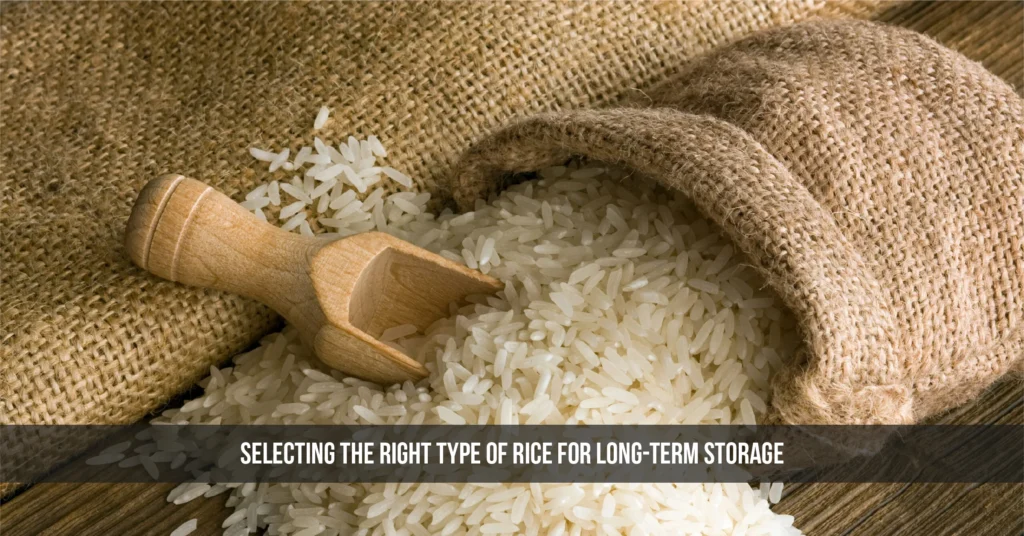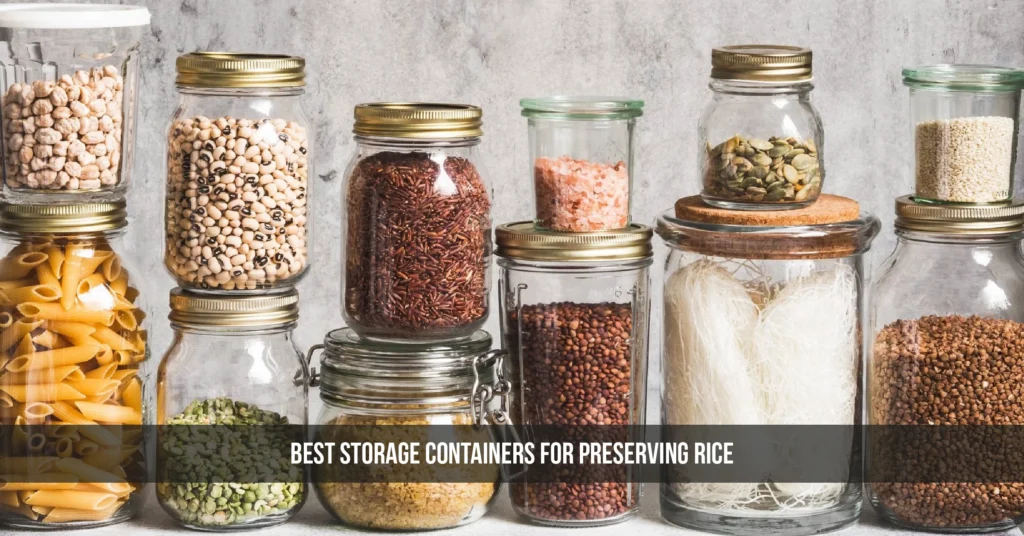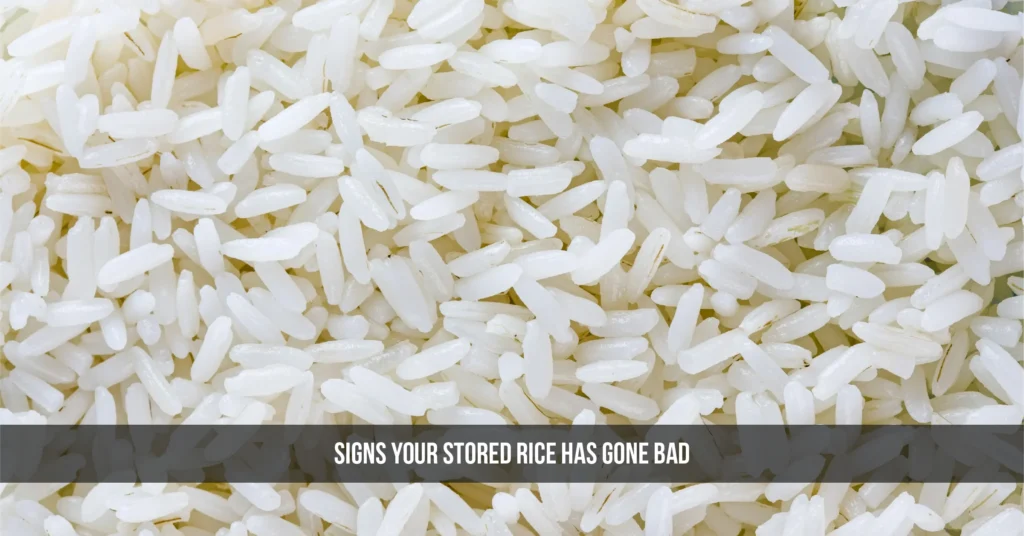How to Store Rice to Keep It Fresh for Years
Storing rice right is key to keeping it fresh for years. It’s important to know how to store rice to keep its quality and nutrients. By using the right storage tips, you can enjoy your favorite rice dishes anytime, without worrying about them going bad.
Several factors affect how to store rice, like the type of rice and the storage conditions. Keeping rice fresh requires careful planning and attention. But with the right advice, you can store rice like a pro. This article will guide you on how to store rice, from choosing the right type to keeping it fresh for years.
Table of Contents
Understanding Why Proper Rice Storage Matters
Properly storing rice is key to keeping it fresh. Rice is a common food in many homes. Its quality can greatly affect your meals. Using long-term rice storage methods helps keep your rice tasty and fresh for longer.
It’s important to know what affects rice quality. Keeping rice fresh means watching moisture, temperature, and pests. Here are some key points:
- Moisture levels: Too much moisture can cause mold and spoilage.
- Temperature fluctuations: Extreme temperatures can harm rice or attract pests.
- Pest control: Insects and rodents can contaminate rice, making it unsafe to eat.
Effective long-term rice storage methods can help avoid these problems. Proper storage saves money, is convenient, and ensures food safety. It’s good for both homes and businesses, improving your finances and health.
| Storage Method | Benefits |
|---|---|
| Airtight Containers | Moisture control, pest protection |
| Cool, Dry Places | Temperature regulation, reduced spoilage |
| Refrigeration | Extended shelf life, freshness preservation |
Understanding the need for proper rice storage is crucial. By using long-term rice storage methods, you can enjoy fresh, quality rice for longer. Remember, keeping rice fresh requires attention to detail and planning.
Selecting the Right Type of Rice for Long-term Storage
Choosing the right rice is key to preventing spoilage. Look for varieties that absorb less moisture and are less likely to attract pests. Consider the rice type, moisture level, and pest resistance when picking.
Some rice types are better for long storage than others. For example, white rice and brown rice need different storage conditions. White rice, with its lower moisture, is more resistant to spoilage and pests. This makes it a top choice for long storage.
To keep rice fresh, think about these factors:
- Type of rice: White, brown, or specialty rice
- Moisture content: Lower moisture content reduces the risk of spoilage
- Susceptibility to pests: Some types of rice are more resistant to pest infestation
By picking the right rice and using proper storage, you can enjoy rice longer. Effective storage means considering these factors to keep your rice quality and fresh.

Essential Preparation Steps Before Storage
Storing rice for a long time requires proper preparation to keep it fresh. You need to check the rice quality first. Look for any damage or contamination.
Then, clean and dry the rice to get rid of impurities and moisture. Use a fine mesh sieve or a clean cloth to remove debris. Spread the rice out to dry in the air. Remember, a cool, dry place is best for storing rice.
Preparation Methods
- Check rice quality for signs of damage or contamination
- Clean and dry the rice using a fine mesh sieve or a clean cloth
- Spread the rice out in a single layer to air-dry
- Store the rice in a cool, dry place to preserve its quality
By following these steps, your rice will stay fresh and of high quality. This way, you can enjoy your rice for a longer time.
How to Store Rice So It Stays Fresh For Years
To keep your rice fresh for years, you need to know how to store it right. Learning the best ways to store rice helps keep its quality and nutrients. It’s key to stop it from getting bad or spoiled.
Storing rice in the best conditions is vital. Use airtight containers and keep them in a cool, dry spot. Make sure the area is dry and free from pests. These tips help you enjoy your rice longer.
Optimal Storage Conditions
When storing rice, consider the container, location, and moisture. Use glass containers or plastic bins with tight lids. Keep the rice away from sunlight and heat.
Moisture Control Techniques
Controlling moisture is key in storing rice. Use desiccants or silica gel to keep it dry. Always check the rice for moisture or spoilage signs.
Temperature Management
Managing temperature is also important. Store rice in a cool, dry place with a temperature between 50°F and 70°F. Avoid hot or humid areas to prevent spoilage.
Best Storage Containers for Preserving Rice
Choosing the right container is key to keeping rice fresh. You need something airtight, durable, and easy to clean. Options include airtight containers, glass jars, or plastic bins, depending on what you prefer.
Popular choices include plastic containers with tight lids, glass jars with airtight seals, and stainless steel containers with secure lids. Think about size, material, and ease of use. This ensures you can keep rice fresh for a long time.
Here are some tips to help you choose the right storage container for your needs:
- Look for containers with airtight seals to prevent moisture and air from entering
- Choose containers made from durable, food-grade materials
- Consider the size of the container and the amount of rice you need to store
- Opt for containers with easy-to-use lids and handles for convenient access
By picking the right container and following long-term storage methods, you can keep rice fresh. Always check the container for damage before storing rice. This ensures you can keep your rice fresh and of high quality.

Natural Methods to Prevent Pest Infestation
Preventing rice spoilage is crucial. Effective rice preservation is key. Pests are a big challenge in storing rice. Natural methods can help keep your rice fresh and pest-free.
Bay leaves are great for repelling pests. They have a scent pests don’t like. Other options include diatomaceous earth and cinnamon.
Benefits of Oxygen Absorbers
Oxygen absorbers help prevent rice spoilage. They remove oxygen, making it hard for pests to survive. This method works well with natural deterrents.
Using oxygen absorbers has many benefits. They:
- Reduce pest infestation risk
- Help rice last longer
- Are easy to add to your storage routine
By using bay leaves and oxygen absorbers, you can keep pests away. Regular checks on your rice are also important. This way, you can catch infestations early and keep your rice fresh.
Signs Your Stored Rice Has Gone Bad
It’s key to watch for signs of spoilage when storing rice. Over time, rice can get mold, mildew, or bugs. This makes it unsafe to eat. Look for mold, mildew, odd smells, or color changes on the rice.
Some common signs of spoiled rice include:
- Mold or mildew on the surface of the rice
- Unusual odors or smells
- Discoloration or changes in texture
- Insect infestation, such as weevils or moths
To avoid spoilage, store rice right. Keep it in a cool, dry spot, and use tight containers. This way, you can enjoy your rice longer.
Checking your rice often helps spot problems early. By storing rice correctly and watching for spoilage signs, your rice stays fresh and safe.

Rotating and Maintaining Your Rice Storage
Keeping rice fresh and quality high is key. A good rotation system is essential when storing rice for a long time. This means organizing your rice so you use the oldest first, preventing it from going bad.
To set up a rotation system, label and date each rice container. This makes it easy to see which rice is the oldest. It helps you follow the “first-in, first-out” rule, keeping your rice fresh.
Regular Quality Checks
Checking your rice regularly is crucial. Look for mold, insects, or bad smells. This way, you catch any problems early and keep your rice fresh and safe.
When checking, look at the rice’s appearance, smell, and feel. If it’s changed, it’s best to throw it away. Regular checks and a good rotation system mean you can enjoy fresh rice for a long time.
Conclusion
Storing rice for years requires careful thought. Knowing how rice degrades helps a lot. Choosing the right rice and using good storage methods keeps it fresh and nutritious.
It’s important to control temperature and moisture when storing rice. The right containers and keeping pests away are also key. With these tips, you can keep your rice fresh for a long time.
Storing rice for emergencies, meal prep, or just to have it on hand is smart. The tips in this article will help you store rice well. This way, you can enjoy having a steady supply of this versatile grain.
Also Read: What Foods Not to Cook in an Air Fryer
FAQs
What is the best way to store rice long-term?
Store rice in airtight containers in a cool, dry place, and use oxygen absorbers or desiccants to control moisture and prevent spoilage.
Which type of rice is best for long-term storage?
White rice is ideal for long-term storage due to its lower moisture content and resistance to pests compared to brown rice.
How can I prevent pests in my rice storage?
Use natural deterrents like bay leaves, cinnamon, or diatomaceous earth, and consider adding oxygen absorbers to keep pests away.
What are the signs that stored rice has gone bad?
Look for mold, unusual odors, discoloration, or insect infestation as indicators that your rice has spoiled and should be discarded.
How often should I check my stored rice?
Regularly inspect your rice every few months for signs of spoilage, pests, or moisture to ensure it stays fresh and safe to eat.














Post Comment